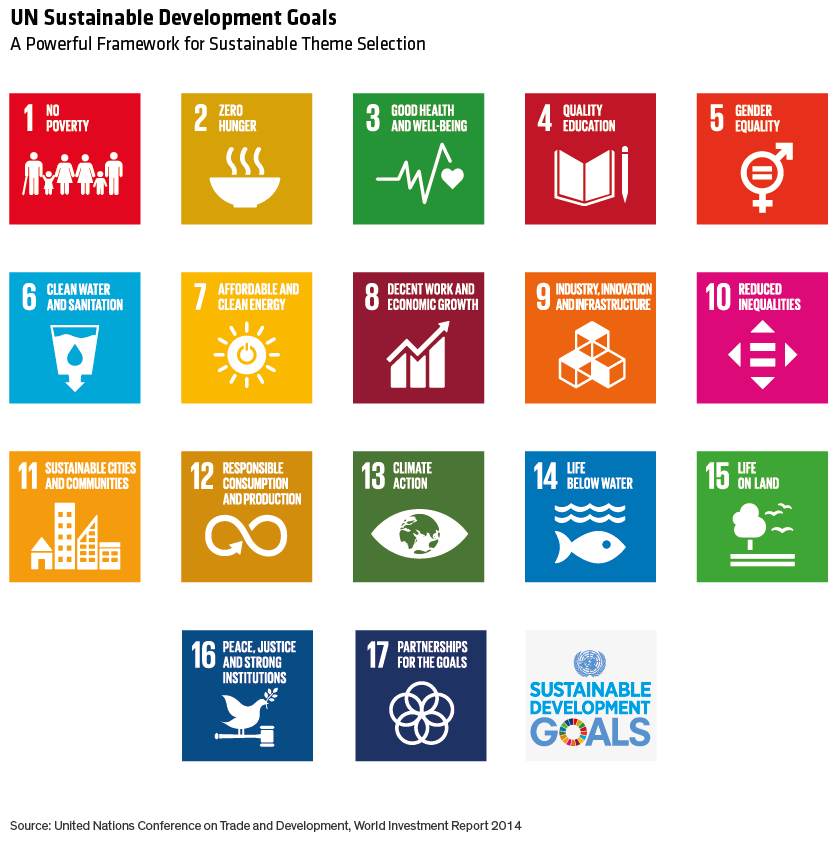At AB, we believe that three main themes—climate, health and empowerment—will remain important to the global society for decades to come and form the basis for powerful investment themes.
Invest for Purpose

Socially responsible investing is a broad term that’s been around for awhile. It refers to many types of ESG approaches—today, it’s becoming more commonly known as “responsible investing.”
Responsible investing means different things to different people. Some clients might prefer an ESG approach that excludes specific industries or sectors that don’t align with their values. Others might want a strategy that integrates ESG considerations in issuer analysis. These considerations may also have financial implications, so incorporating them in fundamental research means evaluating everything from a firm’s demographics to the diversity of its board of directors and its plans to reduce greenhouse gas emissions.
Still other investors view socially responsible investing as an approach that goes beyond ESG integration to embrace specific ESG objectives, such as impact or sustainability. However, it’s important to evaluate ESG mutual funds to gain a clear understanding of exactly how they go about investing in sustainable companies. Many fund managers may follow the UN SDGs as a road map, but those goals serve as broad concepts—it takes practical plans and a thoughtful approach to translate them into investment opportunities.
One way to align a socially responsible investing strategy with the UN SDGs is by identifying themes that focus on where the world is going. This approach can help investors access a strategy that seeks out sustainable companies that generate long-term growth.

Because there’s no one-size-fits-all approach to practicing socially responsible investing, financial advisors should seek an ESG mutual fund, whether it’s a sustainable investing strategy or one that follows a different approach, that aligns the portfolio manager’s capabilities with the client’s own values and ESG-related objectives.
Its popularity may be trending upward recently, but socially responsible investing, referred to more often as responsible investing today, has been around for more than half a century. It’s a broad category that refers to many types of ESG mutual funds that follow diverse approaches—from excluding specific industries to incorporating ESG-related objectives, including impact and sustainability.
In 2015, the UN SDGs pinpointed 17 goals and 169 targets that confront humanitarian issues plaguing the world, including poverty, hunger, inadequate access to education and healthcare, and climate change. Since that year, ESG mutual funds have seen a sizable growth in overall assets and a growing variety of offerings.
We believe that ESG integration and active engagement should be the foundation for every active investment strategy, because ESG considerations may be financial considerations, too. Using the UN SDGs as an organizing framework, it’s possible to identify a universe of sustainable companies helping to address the world’s challenges while also offering long-term growth potential. ESG mutual funds offer one avenue for clients to invest in sustainable companies.
Yes, investing in socially responsible mutual funds—also known as responsible investing—has the potential to generate attractive financial returns for clients. Developing a portfolio of sound investments with long-term growth potential and making a difference from an ESG perspective aren’t mutually exclusive objectives.
Because socially responsible investing, like responsible investing, is a very broad term, clients actually have a diverse range of solutions to choose from in aligning portfolios with their goals and values. For example, ESG mutual funds can feature strategies that actively integrate ESG considerations as part of individual security research as well as those that build on ESG integration in pursuing specific ESG objectives.
Sustainable strategies, for example, seek to generate strong financial returns by investing in sustainable companies. This can be accomplished through either the equity or fixed-income securities issued by companies that provide products and services aligned with the UN SDGs, as they strive to create a better world.
By engaging actively with these companies, investors can promote positive change that may also foster stronger returns. Impact strategies, another type of socially responsible mutual fund, seek to invest in securities that make measurable social or environmental impacts, such as municipal bonds that fund worthy initiatives to improve areas like mass transit and economic community development.
To say that the numbers and assets of socially responsible investment strategies have skyrocketed may be an understatement. Some critics have met this rapid ascension with skepticism. They’re wary of a proverbial “bubble” brought on by the rapid growth in ESG mutual funds, despite the capability of socially responsible investing to serve as a catalyst for investors to advance issues that matter while also generating financial returns.
There’s certainly room for improvement, as there is with any broad universe of investment solutions. But many of the detractors’ claims about socially responsible investing, including that recent underperformance proves that ESG investing doesn’t work, are overstated, in our view. Efforts are ongoing to help investors gain a clearer understanding of portfolio and strategy credentials—through improved transparency and accountability in the communications of socially responsible mutual funds.
It’s also important to remember the reasons that these types of solutions have become so popular—they address real needs that in many ways have been brought front and center during the COVID-19 pandemic as the world has reckoned with the convergence of public health, economic, social and climate crises. Based on past demand and the growing support for tackling ESG issues, we believe that socially responsible investing is here to stay.